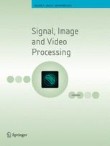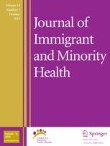|
Αρχειοθήκη ιστολογίου
-
►
2023
(138)
- ► Φεβρουαρίου (74)
- ► Ιανουαρίου (64)
-
►
2022
(849)
- ► Δεκεμβρίου (61)
- ► Σεπτεμβρίου (74)
- ► Φεβρουαρίου (65)
-
►
2021
(2936)
- ► Δεκεμβρίου (59)
- ► Σεπτεμβρίου (180)
- ► Φεβρουαρίου (325)
-
▼
2020
(1624)
- ► Δεκεμβρίου (293)
-
▼
Νοεμβρίου
(376)
-
▼
Νοε 22
(17)
- EEG Characteristics during Short-Term Spontaneous ...
- Cross-Correlation and Coherence Analysis of Electr...
- Absorbed dose simulation of meta - 211 At-astato-b...
- Evaluation of different airway tests to determine ...
- Provider confidence in the telemedicine spine eval...
- Problems with Early Systematic Reviews: The Case o...
- Incidence, impact and risk factors for multidrug-r...
- Sagittal imbalance and symptoms of depression in a...
- Application of an attention U-Net incorporating tr...
- Evaluating the Relationship Between Post Traumatic...
- Numerical investigation of patient-specific thorac...
- Molecular Cloning and Differential Gene Expression...
- Molecular detection and characterization of tick-b...
- Hyalomma anatolicum resistance against ivermectin ...
- Midterm results of homografts in pulmonary positio...
- Review of acute kidney injury and continuous renal...
- Are We Ready for Bariatric Surgery in a Liver Tran...
-
▼
Νοε 22
(17)
- ► Σεπτεμβρίου (234)
- ► Φεβρουαρίου (28)
-
►
2019
(13362)
- ► Δεκεμβρίου (19)
- ► Σεπτεμβρίου (54)
- ► Φεβρουαρίου (5586)
- ► Ιανουαρίου (5696)
-
►
2018
(66471)
- ► Δεκεμβρίου (5242)
- ► Σεπτεμβρίου (5478)
- ► Φεβρουαρίου (4835)
- ► Ιανουαρίου (5592)
-
►
2017
(44259)
- ► Δεκεμβρίου (5110)
- ► Σεπτεμβρίου (5105)
-
►
2016
(7467)
- ► Δεκεμβρίου (514)
- ► Σεπτεμβρίου (1038)
- ► Φεβρουαρίου (793)
Αναζήτηση αυτού του ιστολογίου
Κυριακή 22 Νοεμβρίου 2020
EEG Characteristics during Short-Term Spontaneous Waking Periods of Different Durations with Changes in Psychomotor Activity Induced by Falling Asleep
Cross-Correlation and Coherence Analysis of Electrocortigrams in Rats Subjected to Craniocerebral Trauma
|
Absorbed dose simulation of meta - 211 At-astato-benzylguanidine using pharmacokinetics of 131 I-MIBG and a novel dose conversion method, RAP
|
Evaluation of different airway tests to determine difficult intubation in apparently normal adult patients: undergoing surgical procedures
|
Provider confidence in the telemedicine spine evaluation: results from a global study
|
Problems with Early Systematic Reviews: The Case of Coronavirus Disease 2019 (COVID-19) in Pregnancy
|
Incidence, impact and risk factors for multidrug-resistant organisms (MDRO) in patients with major trauma: a European Multicenter Cohort Study
|
Sagittal imbalance and symptoms of depression in adults: Locomotive Syndrome and Health Outcomes in the Aizu Cohort Study (LOHAS)
|
Application of an attention U-Net incorporating transfer learning for optic disc and cup segmentation
|
Evaluating the Relationship Between Post Traumatic Stress Disorder Symptoms and Psychological Resilience in a Sample of Turkoman Refugees in Turkey
|
Numerical investigation of patient-specific thoracic aortic aneurysms and comparison with normal subject via computational fluid dynamics (CFD)
|
-
This protocol presents an in vitro live-imaging phagocytosis assay to measure the phagocytic capacity of astrocytes. Purified rat astrocyt...
-
Association française pour l'étude du cancer [Imatinib in the treatment of chronic myeloid leukemia in Morocco]. Related Articles [Im...
-
A Case of Miller Fisher Syndrome Due to the Use of Cemiplimab : No abstract available Miller Fisher syndrome is a rare, acquired n...








